Next-Gen Engines
Lee Ann Tegtmeier and Guy Norris May 29, 2014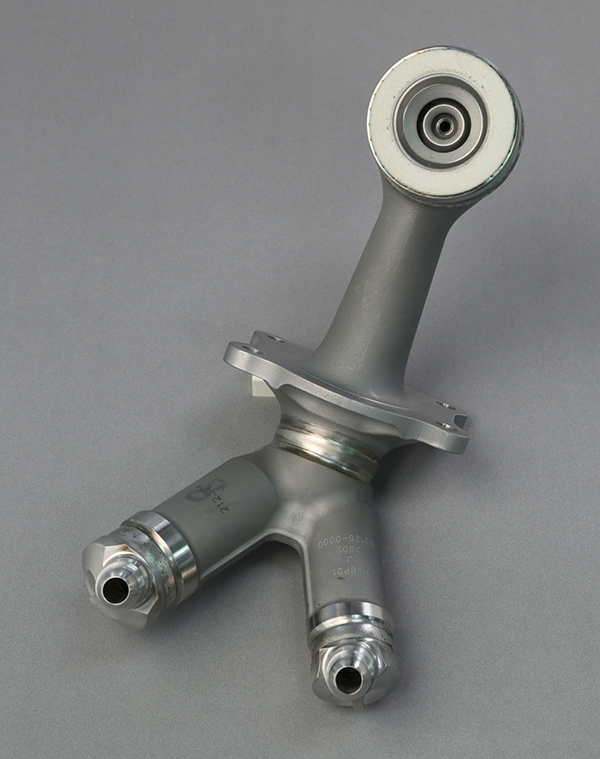
Additive Manufacturing
Besides allowing for more complex geometries with tighter tolerances, production on-demand should reduce the number of spare parts that sit on shelves. GE’s single-part additive fuel nozzle for the Leap engine versions that will power the Boeing 737 MAX and Airbus A320neo replaces a legacy nozzle comprised of 20 pieces that had to be assembled.
Photo credit: CFM International

Composites in Fan Casings and Fans
Composites lower the weight of fan casings, which enable larger fan diameters to facilitate higher bypass ratios and decreased fuel burn. The CFM Leap engine, for example, has a 3-D woven resin transfer molding (RTM) composite fan blade and case.
Photo credit: CFM International
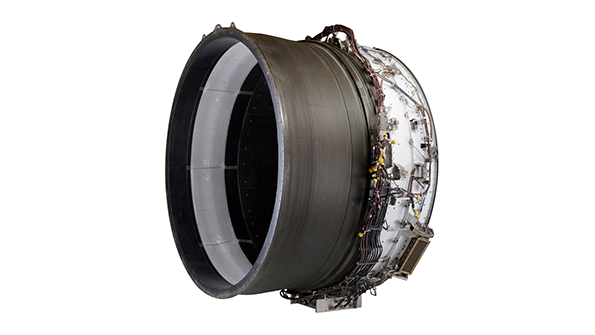
Composites in Fan Casings and Fans
Combined with lower-weight blades, composites enable manufacturers to meet thrust-to-weight ratios on engines such as the GEnx-1B.
Photo credit: General Electric
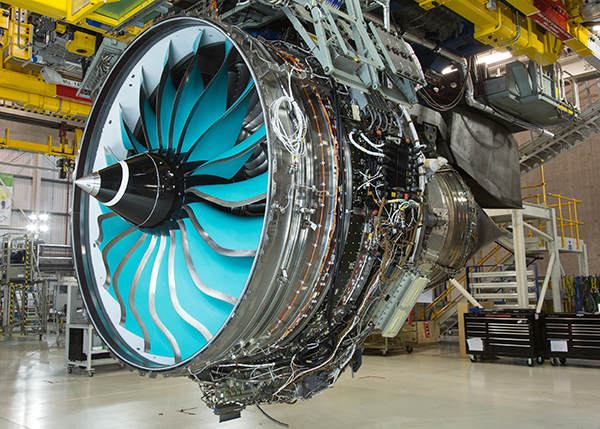
The ALPS Test Program
In addition, Rolls-Royce is expanding the use of composites in its large commercial engines and plans to introduce fans made from third-generation carbon titanium (CTi). Currently under evaluation in the Advanced Low-Pressure System (ALPS) test program, the CTi fan will be flight tested later this year on a modified Trent 1000. Composites will also be used for the fan containment system, radial drive shaft, rear casing and the “rafts,” which will house the engine accessories. Other components of ALPS will include titanium-aluminide turbine blades, an improved method of disk shielding to stop hot air from entering the engine annulus, and high-aspect-ratio blades.
Photo credit: Rolls-Royce
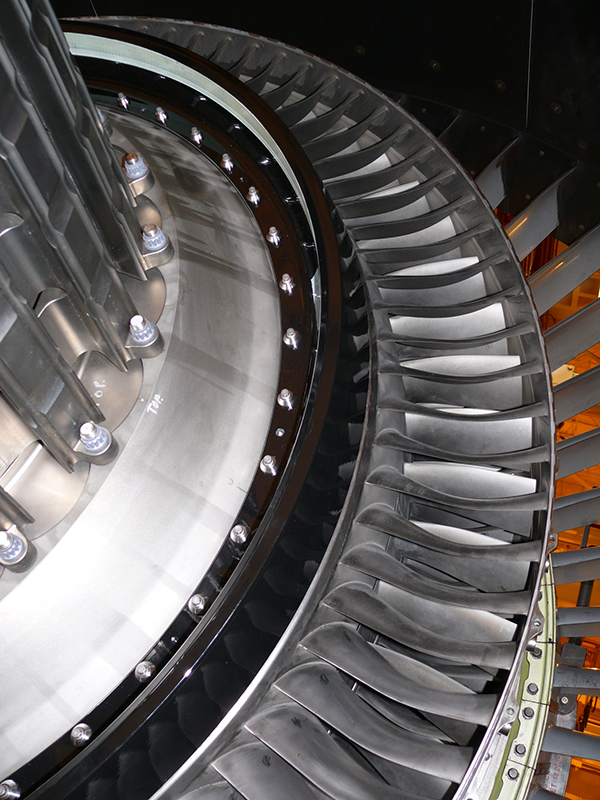
First Use of Load-Bearing Composite in Rotating Parts
GE introduced the first load-bearing composite rotating part in the GE90-115B. The flow-path spacer is made from polymer composite material and is 21 lb. lighter than the stainless steel unit it replaces.
Photo credit: General Electric
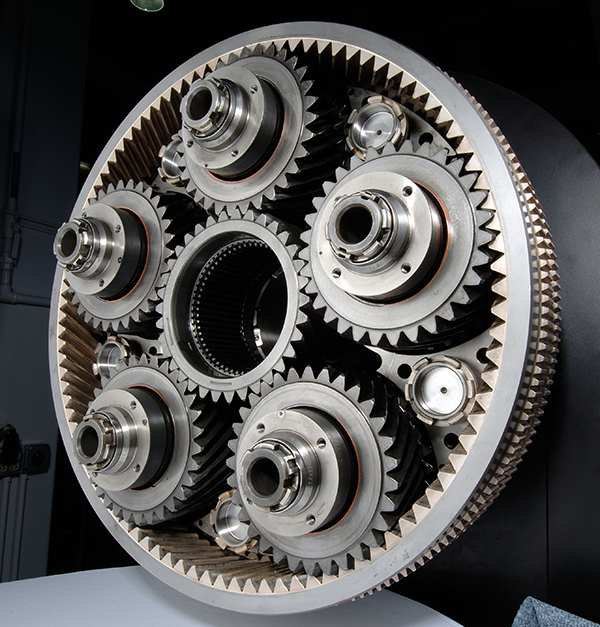
Fan Drive Gear System
Pratt & Whitney’s PW1000G fan drive gear system allows the fan to rotate at a slower speed and the hot section to operate at higher speeds, optimizing the running conditions of both. This also enables the fan diameter to be increased, which, in turn, allows increased thrust at lower jet velocity. Rolls-Royce also plans to adopt a geared fan architecture for its proposed UltraFan large engine.
Photo credit: Pratt & Whitney
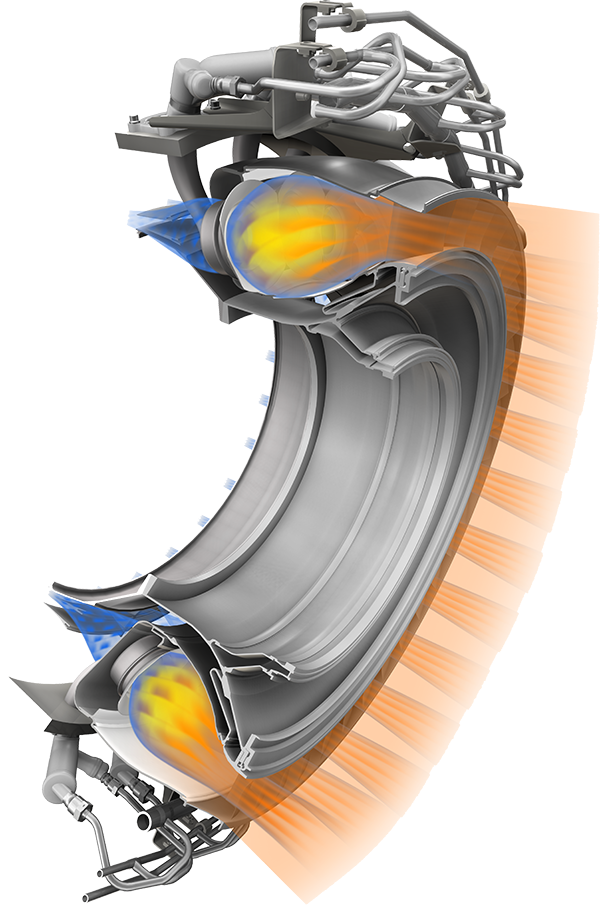
Advanced Combustors
Pratt & Whitney uses the Talon X combustor on its PW1000G geared turbofan family that keeps nitrous oxide emissions low. This combustor provides a 50% margin to ICAO CAEP/6 standards, which prepares the product for even more stringent emissions standards in the future.
Photo credit: Pratt & Whitney

Advanced Combustors
GE’s single-annular TAPS 3 combuster and Rolls-Royce's Alecsys (advanced low-emission combustion systems) are aimed at emissions standards similar to Pratt & Whitney's PW1000G geared turbofan family.
Photo credit: General Electric

Ceramic Matrix Composites
Engine OEMs are testing ceramic matrix composites (CMC) in various engines. For instance, GE is testing a CMC mixer in its Passport engine and plans to increase its use in static parts of its future commercial engine line, including the GE9X. Rolls-Royce and Boeing will test a CMC nozzle in the Trent 1000 on a Boeing 787 EcoDemonstrator, respectively.
Photo credit: General Electric
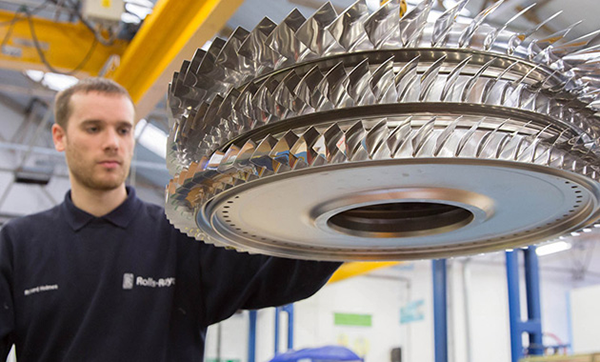
Fewer Forged Parts
The first production Rolls-RoyceTrent XWB that will power the Airbus A350 scheduled to enter commercial service with Qatar Airways later this year will feature a high-pressure compressor blisk like this one for the first Trent XWB-97.
Photo credit: Rolls-Royce
The next generation of engines will include several technologies that will impact time on wing and maintenance—from new materials to geared systems. Here are some to watch.